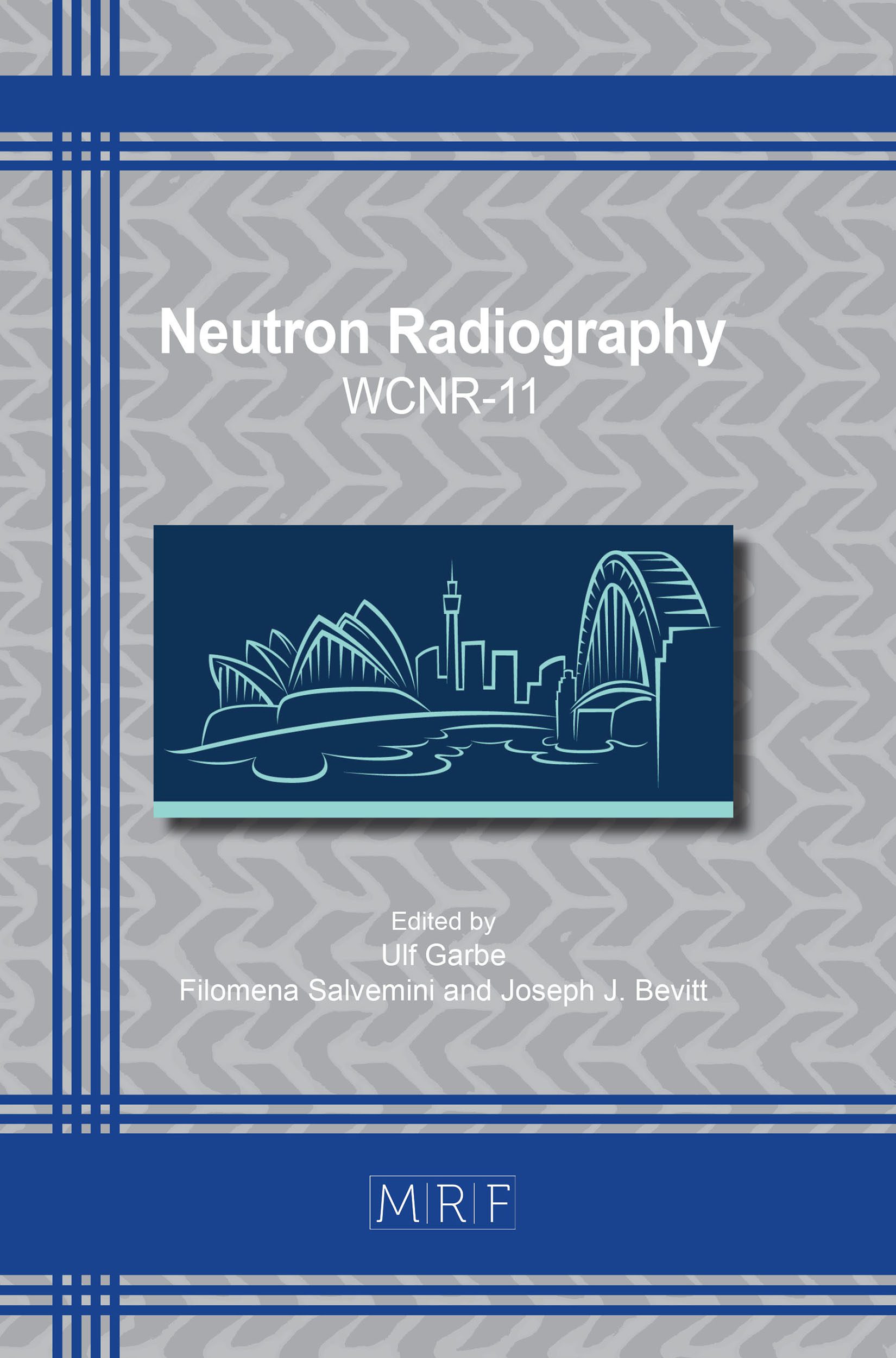High-resolution Detector for Neutron Diffraction and Quantification of Subsurface Residual Stress
Stuart R. Miller, Matthew S.J.Marshall, Megan Wart, Pijush Bhattacharya, Stephen Puplampu, Matthew Seals, Dayakar Penumadu, Rick Riedel, Vivek V. Nagarkar
download PDFAbstract. We have developed a new high-resolution large-area detector for neutron diffraction imaging, specifically for the measurement of subsurface residual stress in engine components. Neutron diffraction typically requires monochromatic thermal or cold neutrons, neutron flux at the detector is orders of magnitude lower than for standard neutron radiography. Therefore the detection efficiency for incident neutrons must be maximized in order to reduce acquisition times. Here we use the high absorption cross section of LNI (6LixNa1-xI:Eu,Tl) scintillators coupled to an Anger camera consisting of an array of silicon photomultiplier (SiPM) detectors. The LNI scintillator developed at RMD is derived from the well-known NaI scintillator and comes in two formats for this application, a vapor-deposited film and a crystal sliced into 1-2 mm thick layers for imaging. In either case, 95% enriched 6Li was utilized. LNI crystal slices have demonstrated high light yield, for example a 1 mm thick sample with 10% Li produced a 40,900 photons/MeV gamma response and a neutron response with gamma equivalent energy (GEE) of 3.76 MeV, indicating 153,800 photons/neutron. In general higher Li content decreases the light yield but increases the GEE up to 4.8 MeV, which is approximately the theoretical maximum. Use of spatially resolved detectors for diffraction signals from single and polycrystalline materials is gaining strong interest from the neutron community, particularly from advanced light source users who benefit from plenty of photons to work with. Since diffraction signals from polycrystalline materials are inherently weak, the use of this approach at neutron facilities, which typically provide a low flux of neutrons in the thermal or cold energy ranges, poses unique problems. This paper presents aspects of utilizing high-resolution and high efficiency neutron detectors for obtaining important engineering measurements such as residual stress considering the target materials of interest. We present for the first time measurements associated with diffraction signals captured using an Anger camera with high spatial resolution for an example scattering polycrystalline powder appropriate for the incident mono-energetic cold neutrons at the CG1 (Cold Guide Hall) beamline of the High Flux Isotope Reactor at the Oak Ridge National Laboratory.
Keywords
Neutron Scattering, Neutron Diffraction, Anger Camera, Residual Stress Measurement, Lithium Sodium Iodide
Published online 1/5/2020, 5 pages
Copyright © 2020 by the author(s)
Published under license by Materials Research Forum LLC., Millersville PA, USA
Citation: Stuart R. Miller, Matthew S.J.Marshall, Megan Wart, Pijush Bhattacharya, Stephen Puplampu, Matthew Seals, Dayakar Penumadu, Rick Riedel, Vivek V. Nagarkar, High-resolution Detector for Neutron Diffraction and Quantification of Subsurface Residual Stress, Materials Research Proceedings, Vol. 15, pp 97-101, 2020
DOI: https://doi.org/10.21741/9781644900574-16
The article was published as article 16 of the book Neutron Radiography
![]() Content from this work may be used under the terms of the Creative Commons Attribution 3.0 licence. Any further distribution of this work must maintain attribution to the author(s) and the title of the work, journal citation and DOI.
Content from this work may be used under the terms of the Creative Commons Attribution 3.0 licence. Any further distribution of this work must maintain attribution to the author(s) and the title of the work, journal citation and DOI.
References
[1 ] H.O. Anger, Review of Scientific Instruments, 29(1) (1959) 27. https://doi.org/10.1063/1.1715998
[2] R.A.Riedel, et. al., Design and performance of a large area neutron sensitive anger camera, NIM in Physics Research A 794 (2015) 224–233. https://doi.org/10.1016/j.nima.2015.05.026
[3 ] V.Nagarkar, H. Bhandari, and O. Ovechkina, United States Patent “Neutron Detector and Fabrication Method Thereof, US 9,417,343 B1, August 16, 2016.
[4 ] P. D. Olcott, J. A. Talcott, C. S. Levin, F. Habte, and A. M. K. Foudray, “Compact readout electronics for position sensitive photomultiplier tubes,” IEEE Transactions on Nuclear Science, vol. 52, no. 1, pp. 21-27, 2005. https://doi.org/10.1109/TNS.2004.843134
[5 ] S. Siegel, R. W. Silverman, S. Yiping, and S. R. Cherry, “Simple charge division readouts for imaging scintillator arrays using a multi-channel PMT,” IEEE Transactions on Nuclear Science, vol. 43, no. 3, pp. 1634-1641, 1996. https://doi.org/10.1109/23.507162
[6 ] Nagarkar, V., Ovechkina, E., Bhandari, H., Miller, S., Marton, Zs., Glodo, J., Soundara-Pandian, L., Mengesha, W., Gerling, M., Brubaker, E., 2013. Lithium alkali halides – new thermal neutron detectors with n-γ discrimination, Nuclear Science Symposium and Medical Imaging Conference (NSS/MIC), 2013 IEEE.
[7 ] Marshall, M.S.J., M.J. More, H.B. Bhandari, R.A. Riedel, S. Waterman, J. Crespi, P. Nickerson, S. Miller, V.V. Nagarkar, “Novel Neutron Detector Material: Microcolumnar LixNa1–xI:Eu,” in IEEE Transactions on Nuclear Science, vol. 64, no. 11, pp. 2878-2882, Nov. 2017. doi: 10.1109/TNS.2017.2762859. https://doi.org/10.1109/TNS.2017.2762859































